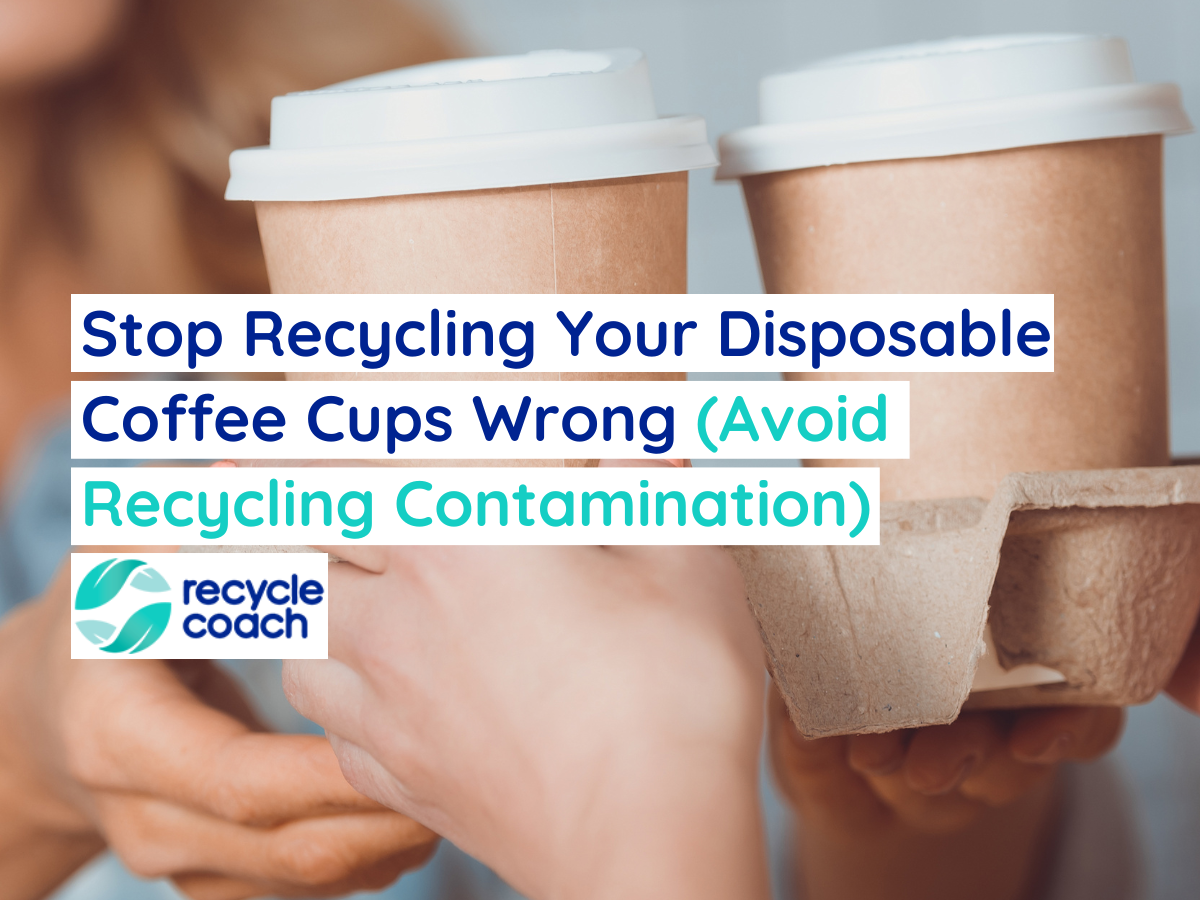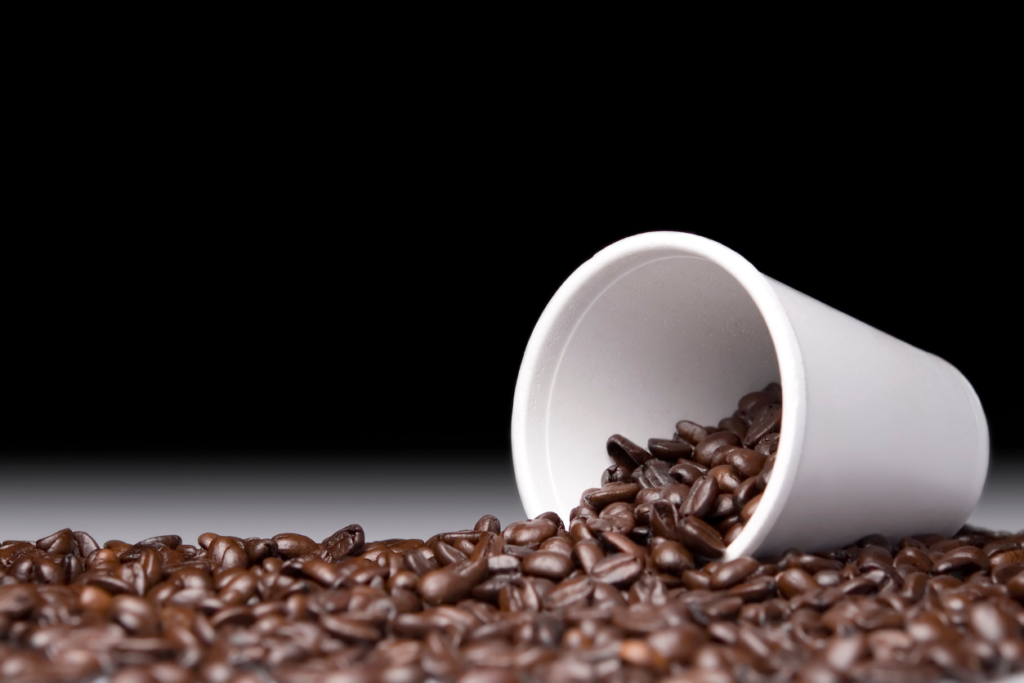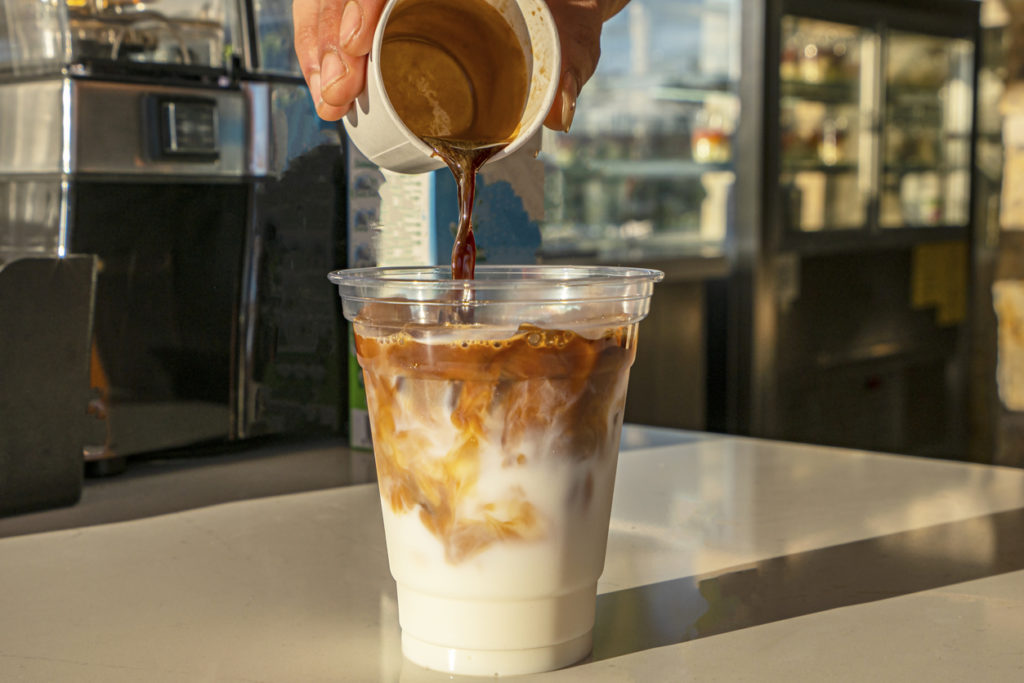Stop Recycling Your Disposable Coffee Cups Wrong (Avoid Recycling Contamination)

There are a few different types of disposable coffee cups you could be recycling wrong. By adding items to the recycling that don’t belong, you could potentially be contributing to recycling contamination.
On average, many municipalities struggle with high contamination rates ranging around 19%-40%. This can lead to a lot of lost recovery of viable recyclable materials.
With the frequency in which people drink coffee on the go, it’s important to know what types of disposable coffee cups are not accepted in your program. By always looking up what your municipal recycling program allows, you can help keep contamination low.
Let’s take a look at each kind of disposable coffee cup to see what you should do.
Paper Coffee Cups

Disposable paper coffee cups are the most common single-use cup for coffee nowadays. It may seem that since these cups are made from paper, they should be recyclable, but calling them paper cups is a bit misleading.
Paper coffee cups are actually lined with plastic, making them a more difficult to recycle. In most cases, when two materials, such as paper and plastic, are adhered together in a product, it is difficult for recycling facilities to separate them in order to recover one or both of the materials.
Due to the high use of this product, and the extreme amounts of waste so many to-go cups can create, many advances have been made in paper coffee cup recycling.
While this is exciting in regards to the progress for recycling and waste reduction, these technologies are not available everywhere yet. Only around 10% of recycling facilities currently accept these plastic-lined paper cups.
Material Recovery Facilities (MRFs) are not all the same, and what sorting machinery they have at their disposal is usually different. This is why it is important to look up if paper coffee cups are accepted in your specific program or not.
Hopefully one day these types of disposable coffee cups will be universally accepted, but until then, it is important you double check so that you don’t contribute to recycling contamination in your area.
Styrofoam Coffee Cups

Foam cups are becoming less and less prevalent in commercial coffee shops, but they are often still used at offices and events. Styrofoam cups, also known as polystyrene cups, are a type of plastic that has been traditionally difficult to recycle.
Most MRFs will not accept Styrofoam coffee cups due to the difficulty in breaking down the polystyrene material. Once again it depends on if a facility has equipment to handle Styrofoam, but there is another contamination issue at play with these.
Styrofoam cups typically have liquid residue left on them. Even if your program is one of the rare locations that accepts Styrofoam or polystyrene, it is probable that they would not accept foam cups or plates due to the high levels of food contamination.
Recycling Styrofoam typically requires a form of chemical recycling that would not be suitable for items with food or liquid residue left on them. So, in general, these types of disposable coffee cups should not be added to your recycling bin.
Clear Plastic Coffee Cups

The popularity of iced coffee has infused another high frequency disposable cup into our daily lives. Clear plastic coffee cups are another item that is not universally accepted. The acceptance rates for this type of plastic are much higher than paper or foam cups though.
Around 50% of MRFs accept plastic cups for recycling. That once again means it is important for you to check your local program to see if they will take this type of plastic cup.
It is easier to keep these smooth plastic cups cleaner than porous foam cups, but it is still important to make sure they are also empty and clean before recycling (if your area recycles them).
Caked on food and liquids can be a detrimental source of contamination for a batch of plastics, so it is important to rinse or wipe your plastic cups before disposing of them.
Plastic Coffee Lids

Plastic coffee lids are also accepted in about half of recycling facilities throughout the U.S. and Canada, so you need to look up if they are accepted in your area.
With plastic coffee lids, it is important to distinguish if it is accepted based on the color of the lid. Even if a program accepts this type of plastic, they may not accept black plastic. Many sorting machines cannot identify black plastic due to the dark color, so these items can end up getting passed through into batches of other materials by mistake.
In addition to the invisibility of this material to the sorting machines, the black color makes it difficult to reconstitute into a new material. A company that would potentially be using this plastic for new products, would have trouble adding dye to a batch of plastic that already has black dye in it.
The confusing part about these lids is that there is usually a recycling loop visible on the top of the lid. It is important to keep in mind that any company can put the recycling loop on packaging, whether it is accepted everywhere or not. This misleading labeling can lead to a lot of recycling contamination.
So, it is always best to check with your specific program instead of assuming that an item is recyclable just because it has the recycling loop.
Cardboard Sleeves

Cardboard sleeves are the only sure thing when it comes to coffee on the go. Cardboard is accepted everywhere for recycling, so no matter what other parts of your coffee cup can be recycled, you should be recycling the cardboard sleeve.
It may seem insignificant because it is so small, but with around 600 billion coffee cups being produced worldwide every year, there are potentially billions of cardboard sleeves to go along with them.
With so many disposable coffee cups being unrecyclable in so many programs, it is important to take advantage of this simple recycling opportunity. If you happen to get a cardboard drink carrier, make sure you add that to your recycling too.
Another way to be more sustainable would be to use your own reusable cup. Many coffee shops will allow you to bring your own travel mug for their drinks. And of course, you can bring your own coffee mug to keep at the office.
Look It Up
While there is no clear cut answer to each type of disposable coffee cup, the big take-away should be that the most important thing you can do when trying to recycle any type of disposable cup is to look up whether your program accepts it before assuming that it does so you can avoid recycling contamination.